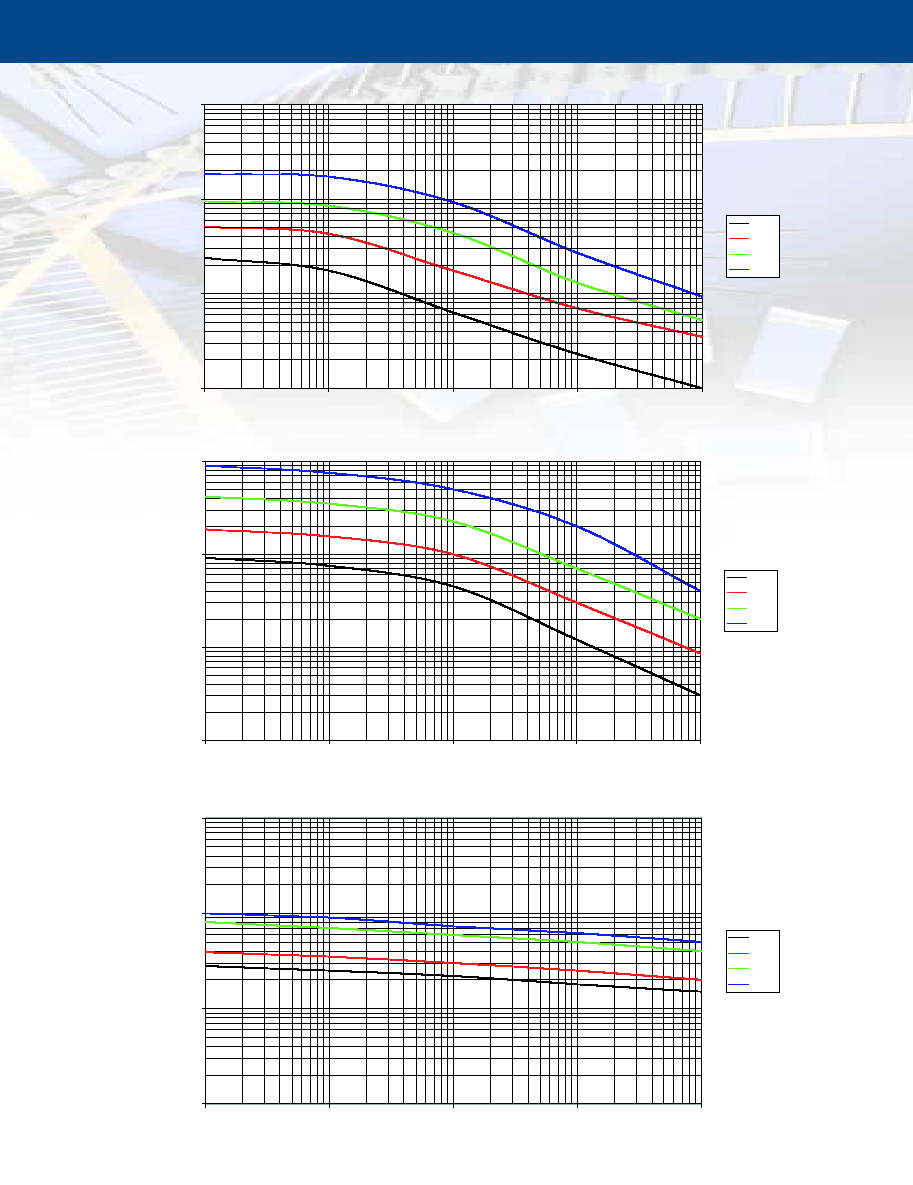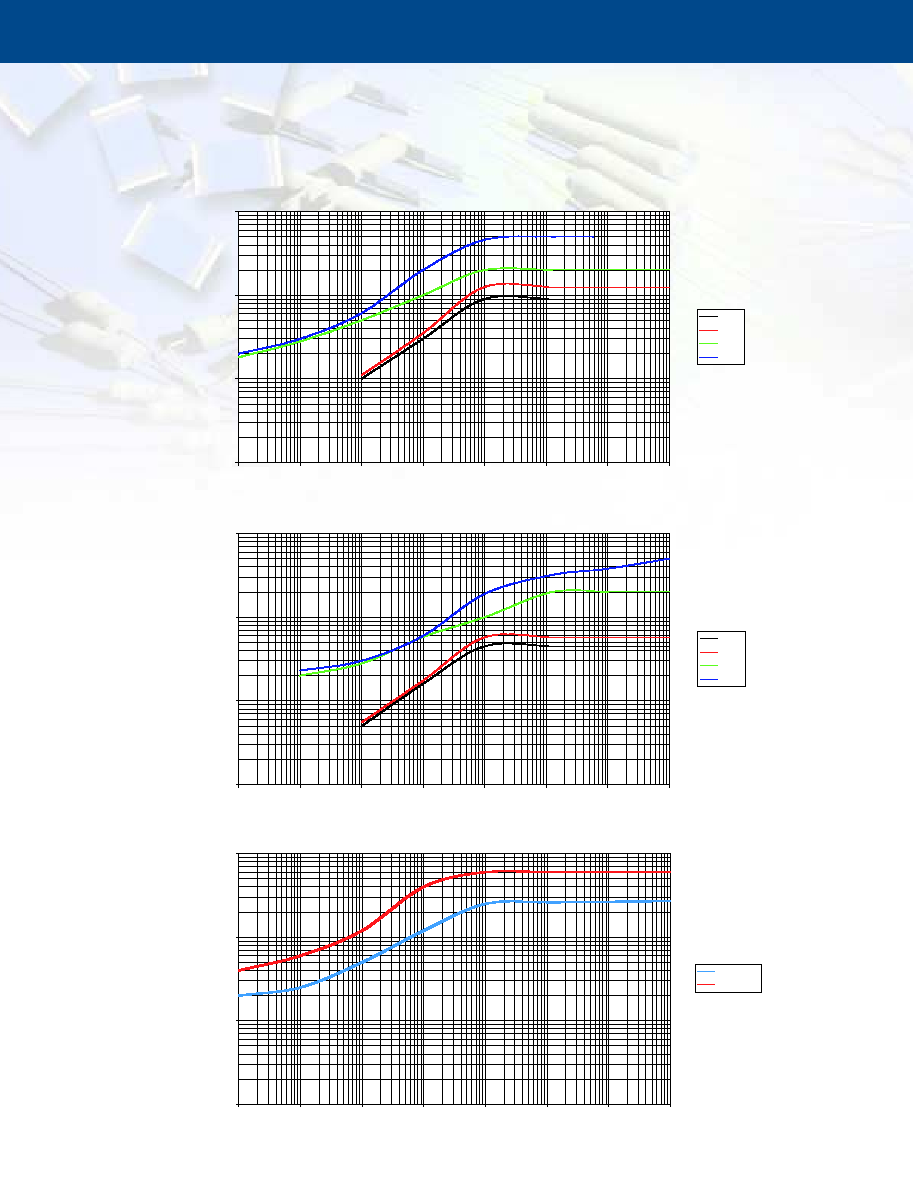 | ÐлекÑÑоннÑй компоненÑ: PWC2512 | СкаÑаÑÑ:  PDF PDF  ZIP ZIP |
Äîêóìåíòàöèÿ è îïèñàíèÿ www.docs.chipfind.ru

Resistive Components
Subsidiaries of TT electronics plc
Pulse Withstanding
Chip Resistors
PWC Series
Today's electronic devices are becoming
smaller and smaller. As a result designers
are moving more towards surface mount
components not only for new designs
but also to design out large axial and
other through-hole resistors. In most
cases this is a straightforward task as
several resistor manufacturers offer chip
resistors with performances to match
axial parts. However in some cases, due
to power rating or pulse withstanding
requirements, this has been impossible.
The requirement, in particular, for pulse
withstand capability is growing due to
the need to protect sensitive modern
electronic systems.
To meet this demand TT electronics have
designed a Pulse Withstanding Chip
Resistor (PWC Series). The PWC series is
available in four standard sizes from
0805 to 2512 as shown in the following
table. The table also gives details of the
improved LEV (Limiting Element Voltage)
and increased power rating. Pulse
withstanding details are given on the
following pages.
The enhanced performance of the chips
is made possible by the precise use of
the best resistance inks and a closely
controlled production process.
· Excellent pulse
handling
performance
· Cost effective
custom designs
available
· Field proven with
millions of units
in use
· Standard and
custom chip sizes
(0805 to 2512)
Leading in Tomorrow's Technology
PWC_AN_B.qxd 15/1/03 4:54 pm Page 3

Applications
Size
0805
1206
2010
2512
Power @70°C
0.125W
0.33W
0.75W
1.5W
Resistance range
1R0 to 10M
Tolerance
0.5*, 1, 2, 5%
LEV
150V
200V
400V
500V
TCR
<10R:200ppm/°C
10R:100ppm/°C
Operating temperature
-55 to +155°C
Values
E96 preferred other values to special order
Pulse capability
See following pages
Line
Welwyn
Resistor
Over
Voltage
Protection
Welwyn
Resistor
Input
Lightning Surge
Power
Supply
Circuit
Output
Applications vary from line protection for telecommunications
to surge withstanding resistors for use in circuit breakers.
Details of a typical telecomm and power supply application are
given below.
Telephone lines can be subjected to a large range of voltage
disturbances, many of which can damage switching equipment.
This has led to the need for circuit protection against both high
voltage transients, usually of short duration caused by lighting
strikes and overloads of longer duration, due to direct
connection to mains power lines.
These two faults are separated into primary and secondary
protection. Primary protection handles the high voltage
transients, and is usually located within the exchange. Secondary
protection is usually built into the equipment to be protected,
and deals with both current and voltage limiting.
Voltage limiting prevents damage to the equipment and shock
hazards, and current limiting prevents damage to wiring.
A typical application circuit is shown in fig 1 where the resistors
are designed for ring signal sending through a solid state relay.
The resistors are protected from lightning surge by Over-voltage
Protection in the system and the resistors are required to
withstand pulses of 15 Watts for 1 second and 75 Watts for
0.1 second, repeated 60 times. Test requirements for telecomms
applications are laid down by the International
Telecommunications Union (ITU) and Bell Communications
Research (Bellcore).
Fig 2 shows a typical power supply or battery charger circuit. In
this application the resistor is required to withstand a small
inrush surge, and also a lightning strike surge. The lightning
strike is usually simulated by applying either a 1.2/50µs or
10/700µs pulse shape, the number of pulses and pulse intervals
being specified by the customer or the relevant standard. Typical
standards to be met are Cenelec EN50082-1 and EN50082-2
which are part of the European EMC directives, and
Bellcore 1089 for the US market.
To determine the suitability of a PWC series chip resistors for
your application refer to the pulse withstanding data as given
below. Graphs have been produced to show the PWC
performance under single and continuous pulse, maximum pulse
voltage for single and continuous pulses and lighting surge
performance using both 1.2/50µs and 10/700µs pulse shapes.
Fig 1
Fig 2
2
*0.5% Tolerance only available on values 10R to 1MO.
PWC_AN_B.qxd 15/1/03 4:54 pm Page 4

Description of Performance Tests
Rectangular Pulses
Exponential Pulse
Single Impulse
The single impulse graph was the result of 50 impulses of
rectangular shape applied at one minute intervals. The limit of
acceptance was a shift in resistance of less than 1% from the
initial value. The power applied was subject to the restrictions
of the maximum permissible impulse voltage graph as shown.
Continuous Load Due to
Repetitive Pulses
The continuous load graph was obtained by applying repetitive
rectangular pulses where the pulse period (tp) was adjusted so
that the average power dissipated in the resistor was equal to
its rated power at 70°C. Again the limit of acceptance was a
shift in resistance of less than 1% from the initial value.
The formula used to calculate the average power for repetitive
pulses is shown below.
For a rectangular impulse
P =
For an exponential impulse P =
Where
R = nominal
resistance
t
p
= time of the pulse period
(1/tp = pulse frequency)
V = peak voltage of the impulse
P
= average power dissipation
of continuous pulses
t
i
= impulse time of a rectangular pulse
T
e
= time constant of an exponential pulse
V
2
t
i
< Pnom
R t
p
V
2
t
e
< Pnom
R 2t
p
3
PWC_AN_B.qxd 15/1/03 4:54 pm Page 5

Resistive Components
Single Pulse
1
10
100
1000
0.0001
0.001
0.01
0.1
1
Pulse Duration ti (s)
Pulse Power P (W)
0805
1206
2010
2512
4
Continuous Pulses
0.1
1
10
100
0.0001
0.001
0.01
0.1
1
Pulse Duration ti (s)
Pulse Power P (W)
0805
1206
2010
2512
Pulse Voltage
10
100
1000
10000
0.0001
0.001
0.01
0.1
1
Pulse Duration ti (s)
Pulse V
oltage (V
olts)
O805
1206
2010
2512
PWC_AN_B.qxd 15/1/03 4:54 pm Page 6

Resistive Components
5
1.2/50
µs Lightning Surge
10
100
1000
10000
1
10
100
1000
10000
100000
1000000
10000000
Value (ohms)
Peak voltage (volts)
0805
1206
2010
2512
PWC2512 Pulse Testing to Bellcore 1089 Specification
10
100
1000
10000
1
10
100
1000
10000
100000
1000000
10000000
Value (ohms)
V
o
lts Applied
10/1000
µs
2/10
µs
10/700
µs Lightning Surge
10
100
1000
10000
1
10
100
1000
10000
100000
1000000
10000000
Value (ohms)
Peak V
o
ltage (V
olts)
0805
1206
2010
2512
Lightning Surge
Resistors are tested in accordance with IEC61000-4-5 using both 1.2/50µs and 10/700µs pulse shapes and Bellcore 1089 using both
2/10µs and 10/1000µs pulse shapes (2512 size only). The limit of acceptance is a shift in resistance of less than 1% from the initial value.
PWC_AN_B.qxd 15/1/03 4:53 pm Page 1




